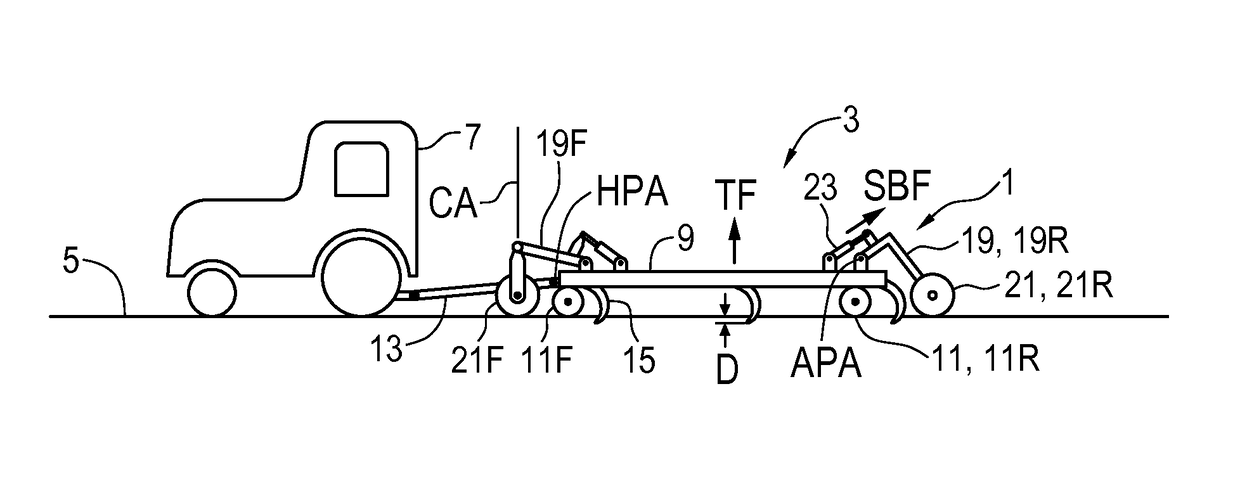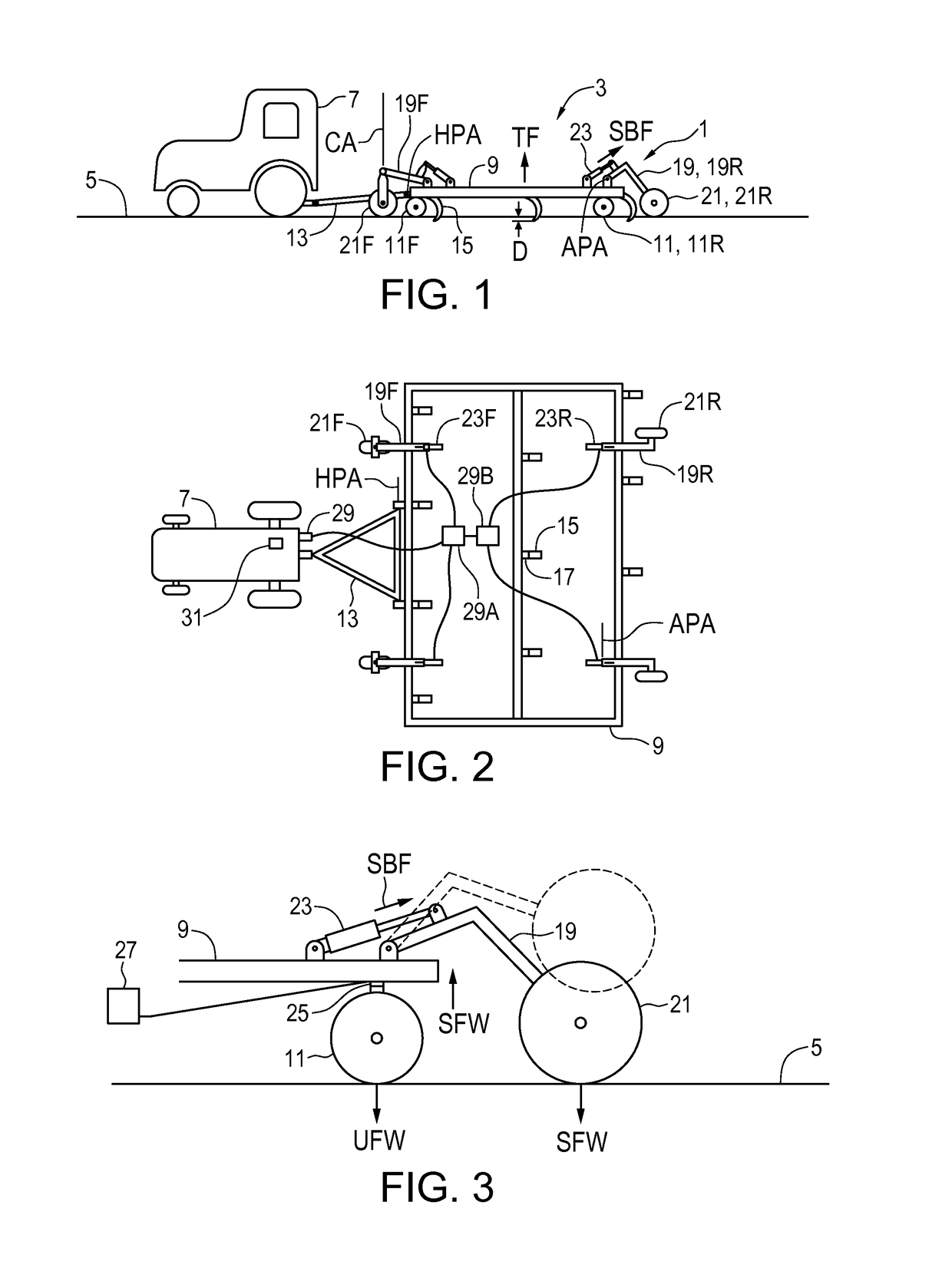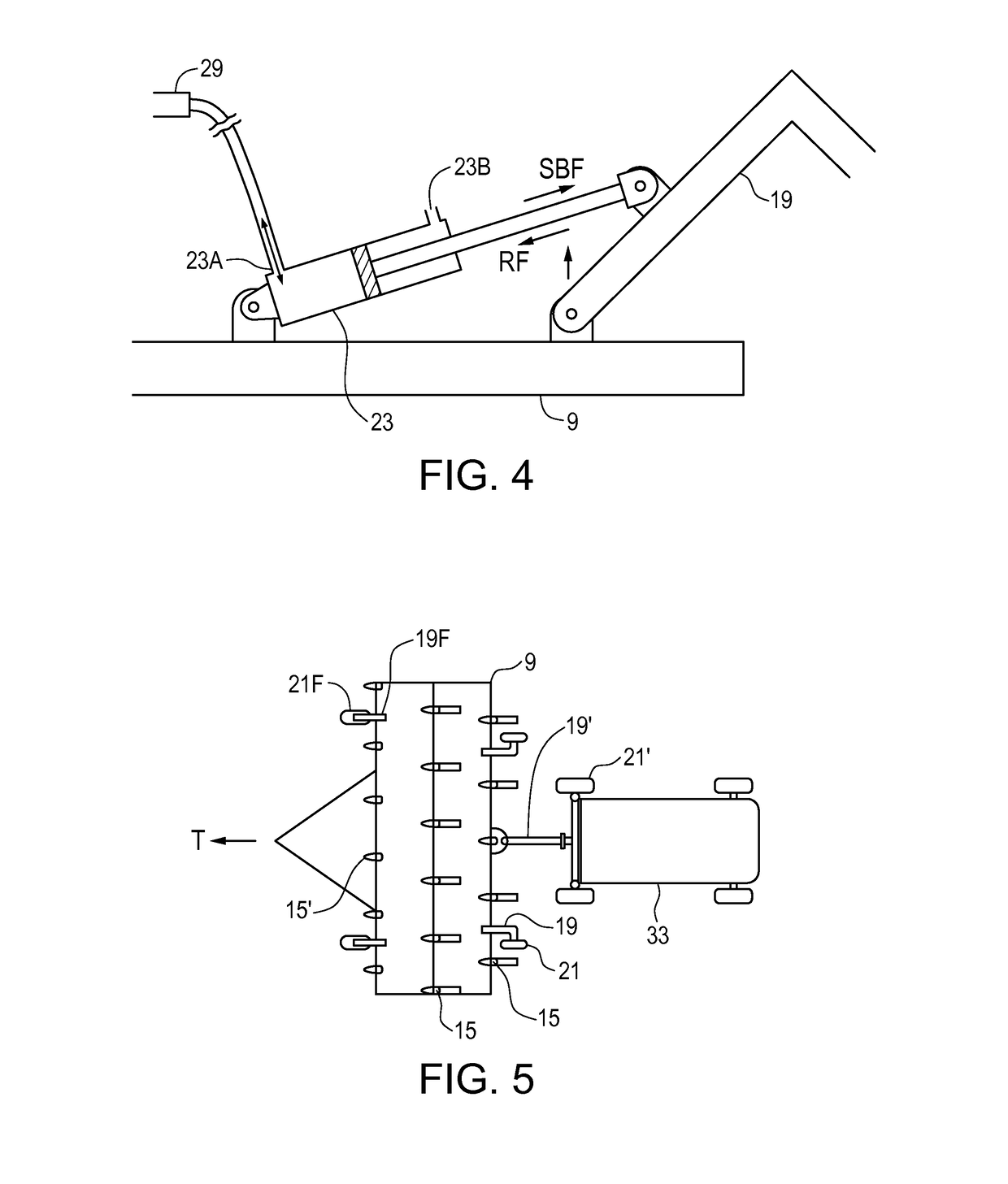Reducing wheel forces on a field surface
a field surface and wheel technology, applied in the field of reducing wheel forces on the field surface, can solve the problems of increasing the space required for the placement of each front wheel, reducing the productivity of soil, and reducing the space available for the frame wheel, so as to reduce the force of the wheel, reduce the compaction, and reduce the effect of soil productivity loss
- Summary
- Abstract
- Description
- Claims
- Application Information
AI Technical Summary
Benefits of technology
Problems solved by technology
Method used
Image
Examples
Embodiment Construction
[0027]FIGS. 1 and 2 schematically illustrate an embodiment of a system 1 of the present disclosure for reducing implement wheel forces on an agricultural field surface. An agricultural implement 3 is connected to a tractor 7 for towing along the field surface 5 and the implement 3 comprises an implement frame 9 mounted on a plurality of frame wheels 11 for travel in an operating travel direction T along the field surface 5. The illustrated implement 3 is of the floating hitch type with front and rear frame wheels 11 and a hitch 13 pivotally attached to the implement frame 9 about a hitch pivot axis HPA. As is known in the art the front frame wheels 11F are caster wheels.
[0028]A plurality of ground engaging tools 15 are mounted on the implement frame 9, and the frame wheels 11 support the implement frame 9 and ground engaging tools 15 in a desired orientation with respect to the field surface 5, with the implement frame 9 substantially parallel to the field surface 5. A tool control ...
PUM
 Login to View More
Login to View More Abstract
Description
Claims
Application Information
 Login to View More
Login to View More - R&D
- Intellectual Property
- Life Sciences
- Materials
- Tech Scout
- Unparalleled Data Quality
- Higher Quality Content
- 60% Fewer Hallucinations
Browse by: Latest US Patents, China's latest patents, Technical Efficacy Thesaurus, Application Domain, Technology Topic, Popular Technical Reports.
© 2025 PatSnap. All rights reserved.Legal|Privacy policy|Modern Slavery Act Transparency Statement|Sitemap|About US| Contact US: help@patsnap.com



